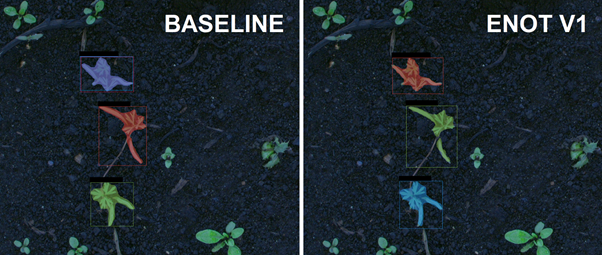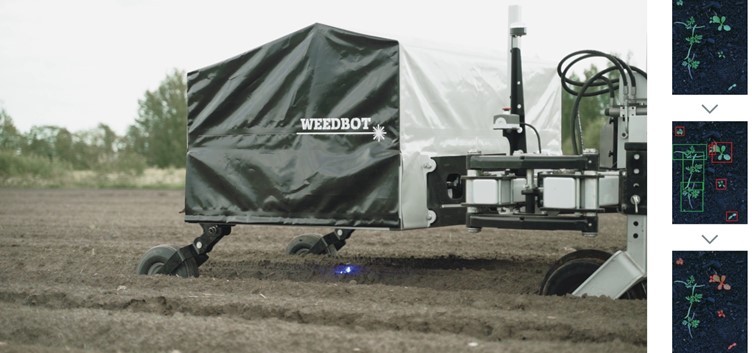Lumina is a state-of-the-art laser weeding machinery developed by WeedBot. It has a modular design and one module takes care of one ridge of the crop. Each laser weeding module contains all necessary components to operate fully independently - lasers, cameras, and embedded GPU processing unit.
A camera captures an image from the top of the ridge. Then a neural network-based algorithm finds all plants in the image and separates weeds from the crop seedlings. As a final step, a laser beam is applied to the weeds so the water in the leaves boils up. After the treatment leaves wilt. This approach is more productive than manual weeding and more environmentally friendly than herbicide treatment.
Task
The baseline segmentation model uses high-resolution RGB images to be able to detect the smallest parts of the plants.
Weedbot set two objectives:
- Accelerate the model speed by at least 2x with an accuracy loss of no more than 0.02.
- enot.ai should suggest model parameters to achieve a higher recognition accuracy.
The main challenge of this project was to speed up and improve the already fast and accurate model. Theoretically, accuracy/speed optimization can be achieved by a manual neural network parameters selection: operations, depth (number of layers), width (number of filters), optimal input resolution, bit rate calculations (float32, float16, int8). There are more than a million possible combinations, and it is impossible to manually select the best one, thus it was decided to use enot.ai’s framework.

Main technical parameters
- accuracy of object detection and segmentation - eIoU mAP@[.5:.95];
- the time it takes to process one frame - latency (ms/image).
Input data from the customer
- Hardware - Nvidia Jetson AGX;
- Processing time per frame - 22 ms/image;
- Accuracy - 0.5321;
- The architecture of the neural network - cannot be undisclosed.
Target:
- Accelerate the model speed by at least 2x with an accuracy loss of no more than 0.02 (quality metric - eIoU mAP@[.5:.95]).
- enot.ai should suggest model parameters to achieve a higher recognition accuracy.
Results:
enot.ai's framework enabled Weedbot to find the optimal operations, neural network depth, and width, as well as input resolution that meets the required speed of operation at the best achievable accuracy. The search was run in two modes according to the objectives:
- Optimal network search at improved running speed (enot.ai V1), see Figure 1: maximized acceleration
- The search of the neural network with the best achievable accuracy (enot.ai V2), see Figure 1: maximized accuracy

Summary
After using enot.ai’s framework, Weedbot was able to achieve the following:
- enot.ai V1 - processing time decreased from 22 to 8 ms/img, and the accuracy has not only not decreased, but rather increased.
- enot.ai V2 - the recognition accuracy increased by almost 20%, while the processing time decreased from 22 ms/img to 14ms/img.
To sum up, enot.ai's framework was able to achieve
2.72x acceleration with the potential to increase accuracy by almost 25%.
